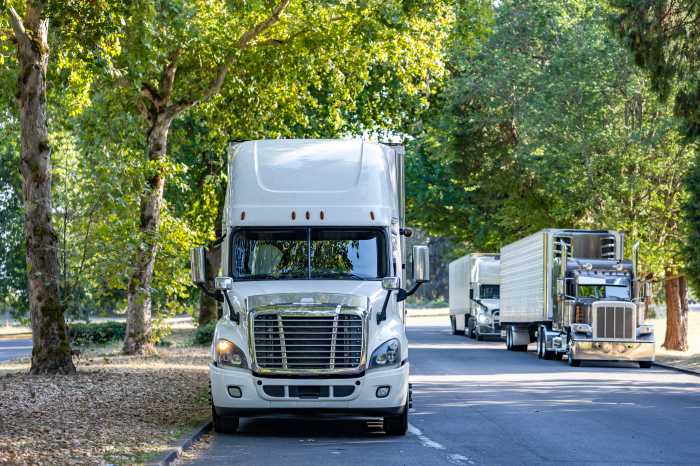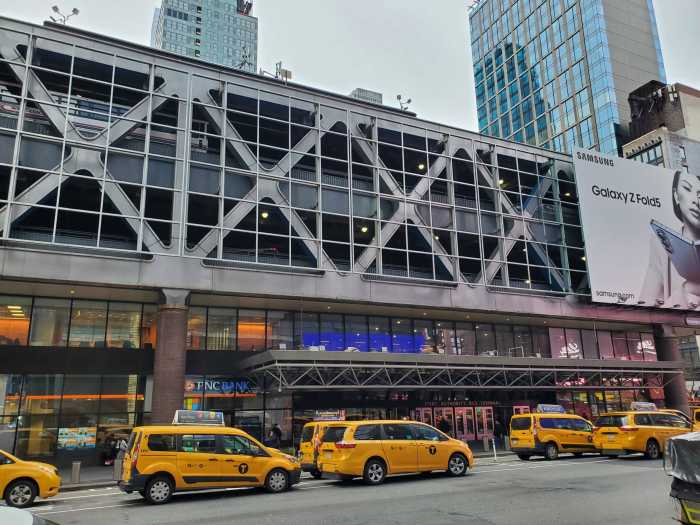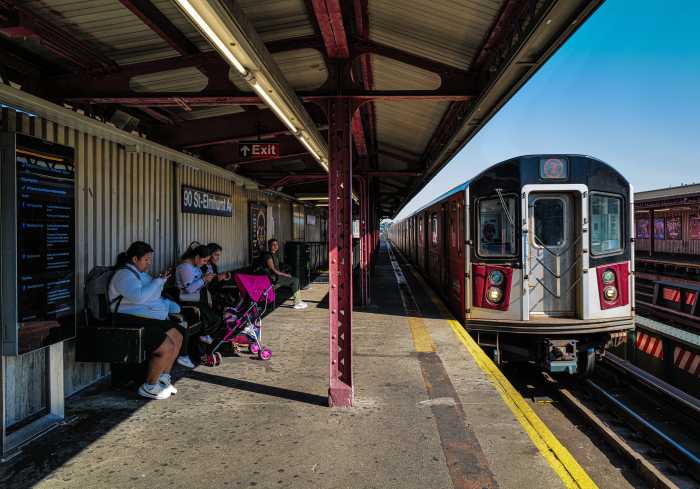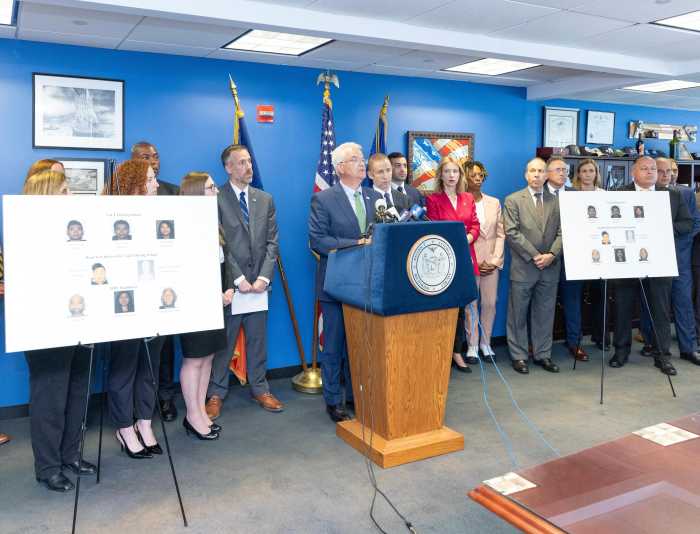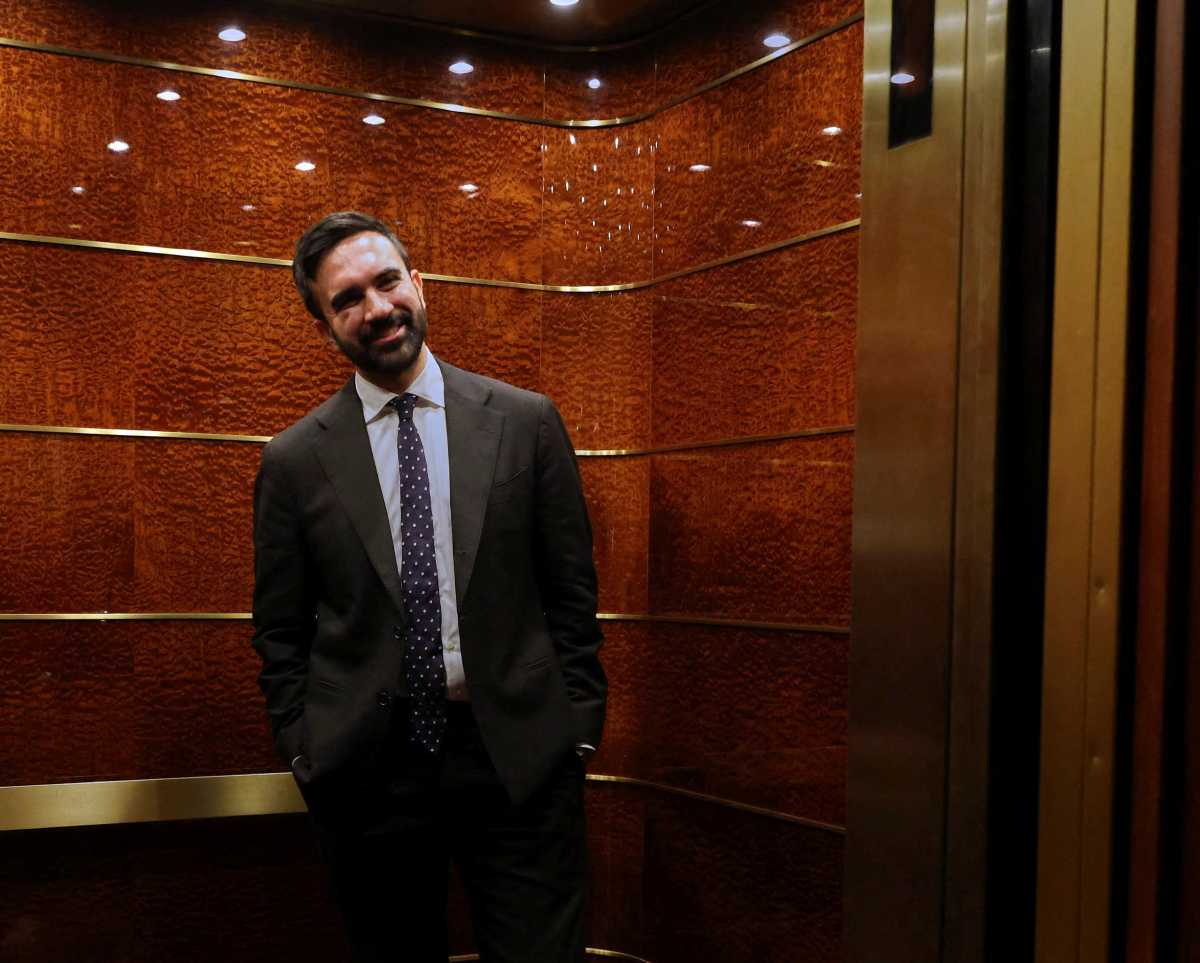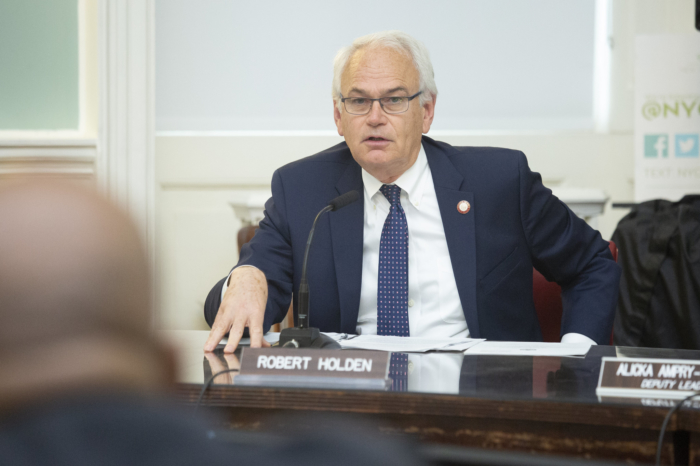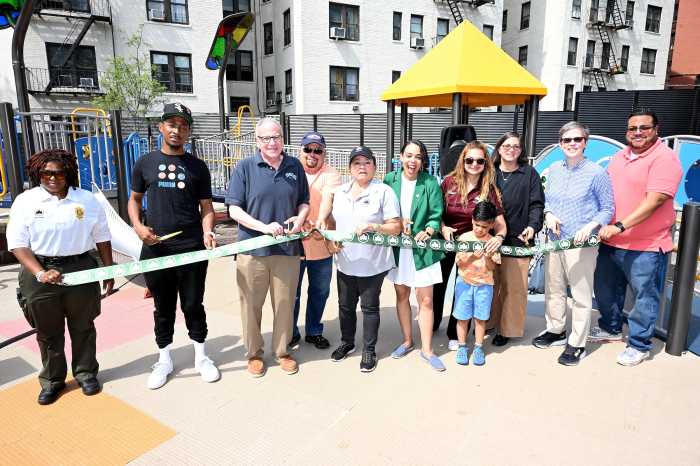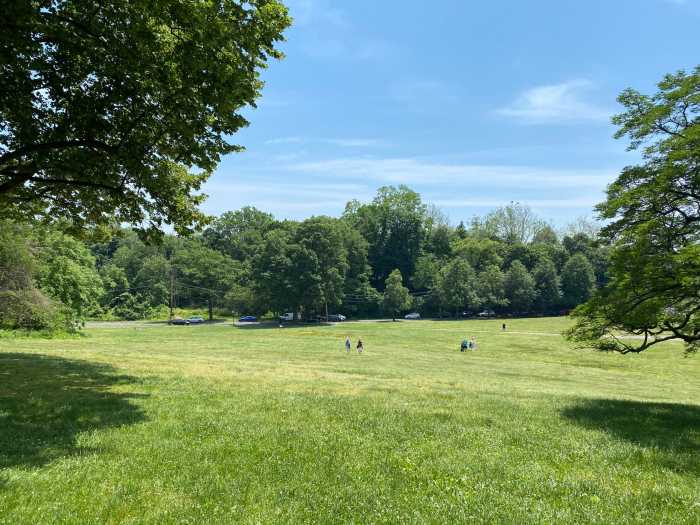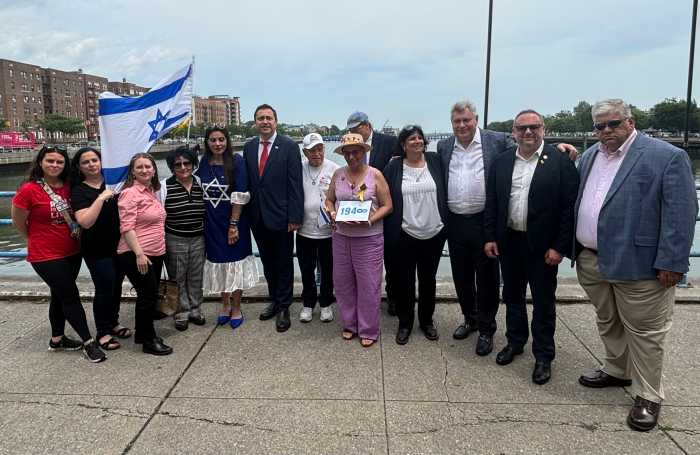Many Queens subway commuters will face jam-packed platforms and slow rides for the next three weeks during rush-hour while the MTA replaces track bed on the Queens Boulevard route, the second busiest stretch in the transit system.
“Customers on all four subway lines that use the Queens Boulevard route should expect less frequent service and should plan extra time for their travels,” said MTA spokeswoman Amanda Kwan.
The E, F, M, and R lines will be affected in both directions until Friday, Sept. 4, but service snags will be worse during the afternoon rush-hour.
The MTA will do the work on the Queens-bound express tracks at night, but there will be fewer trains — and running at lower speeds — in both directions until the track bed has a concrete foundation. Trains passing through work zones will go at speeds of 10 mph.
The upgrade will prevent rail breaks and make the track bed sturdier.
More E and F trains, which are mobbed at 95% capacity during the morning rush-hour, will also run local. This will cut down on space for M and R trains, which have a little more breathing room at 59%.
There will also be no E train service at the Jamaica-179th Street stop, the MTA added. Riders should transfer at Union Turnpike to the E.
Some subway riders were confused by an advisory the MTA released about the changes, and thought the work had been scheduled during rush-hour.
“I think you should do railwork b/w 10 pm- 5am,” posted Instagram user Xircuits, with hashtags #wtf and #mta.
The MTA said it does not know how many riders will be affected, but that they scheduled the work during the time of year when ridership is the lowest.
Subway rider Cookie Hoskins, a 59-year-old visiting nurse from Rosedale, said service on the E and F is already terrible.
“It’s a losing battle with the system,” she said. “I’m miserable.”
The MTA said waits between trains will be about three to four minutes longer, but it varies by line.
Transit documents regarding the project, however, show riders may face waits on the platform three to six minutes extra.
Josselyn Atahualpa, a 23-year-old organizer for the Riders Alliance from Jackson Heights, said she was most concerned about overcrowding from the track work — and wants the MTA to have a well-funded capital plan.
“It’s already super crowded, I can’t even imagine how crowded it’s going to be, especially 74th Street and Broadway,” she said. “I’ve seen it where people are lining up at the stairs. It’s very dangerous, people crowding up at the edge of the platform.”
Construction worker Noel Fernandez, 25, of East Elmhurst, said he might skip the E train and take the No. 7 instead to Manhattan.
“Sometimes there are a lot of delays,” he said. “The E and 7 are the worst.”



